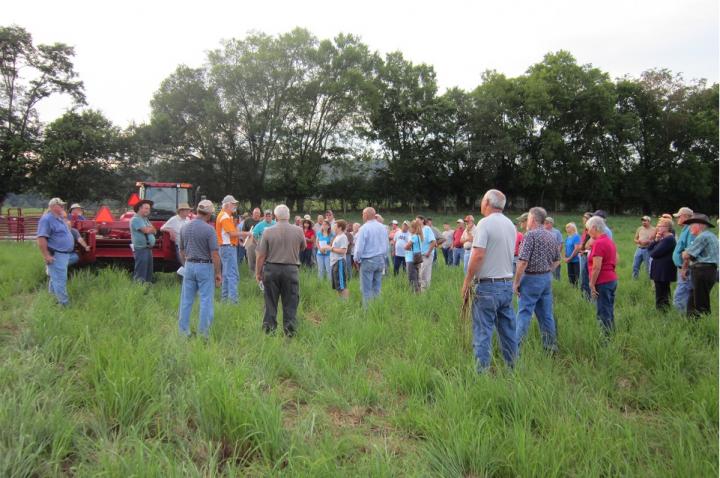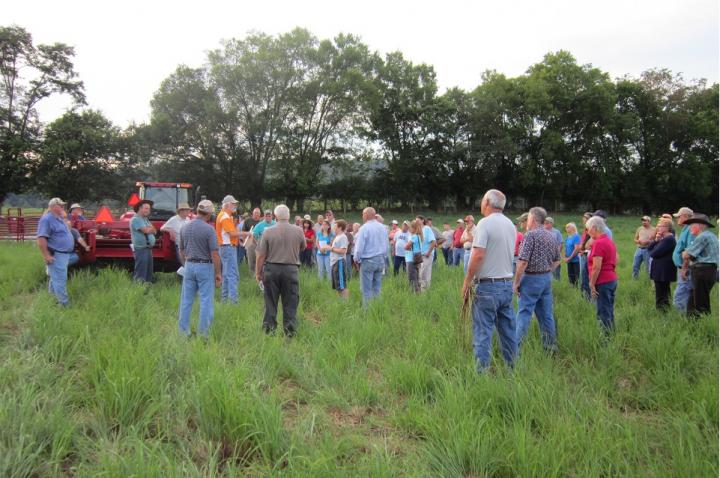
Credit: Photo courtesy UTIA.
KNOXVILLE, Tenn. — A new study by researchers with the University of Tennessee Institute of Agriculture will evaluate pastures to document how management of native grasslands may enhance soil biodiversity and contribute to producer profitability.
The four-year, $375,000 study is being funded by the USDA National Institute of Food and Agriculture and will be led by Patrick Keyser, Director of the UT Center for Native Grasslands Management, a program within the UT Department of Forestry, Wildlife and Fisheries. Keyser will work with a large transdisciplinary team of UTIA scientists including an entomologist, plant and animal scientists, a soils expert, and economists.
Planting winter annual cover crops has been the focus of efforts to improve soil health and agricultural productivity; however, Keyser says the nutrient dynamics of native grasses in forage settings in the humid eastern U.S. have received little attention from the scientific community. "Pastures cover nearly 48 million acres across the eastern U.S., but the comparative lack of data on the potential of native grass forage to improve soil health makes this study imperative," he postulates.
"We will examine how to optimize fertility and cover crop management strategies for low-input, highly nutrient-efficient grass species that are native to the region including switchgrass, big bluestem and eastern gamagrass," Keyser said. He and his colleagues believe that the large amount of below-ground organic matter produced by these species' extensive root systems creates the foundation for a vibrant micro-invertebrate community that in turn enhances the environment for both free-living soil bacteria and arbuscular mycorrhizae.
"This rich soil biodiversity can improve productivity, thus forming a self-reinforcing feedback loop fostering healthier and more productive agro-grasslands," Keyser adds.
Other UTIA researchers involved in the project include Ernie Bernard, Department of Entomology and Plant Pathology; David Butler, Department of Plant Sciences; Jennifer DeBruyn, Department of Biosystems Engineering and Soil Science; Andrew Griffith and Karen Lewis, both of the Department of Agriculture and Resource Economics; and Travis Mulliniks, Department of Animal Science. Amanda Ashworth, a researcher with the USDA Agricultural Research Service, and two UTIA doctoral students, Johnny Richwine, Department of Forestry, Wildlife and Fisheries, and Heather Toler, Department of Plant Sciences, round out the research team.
The researchers hypothesize that fertility and cover crop management practices, like planting legumes or other winter annual cover crops, exert a strong influence over components of soil biodiversity. "As the cover crops degrade, we believe they provide an organic fertilizer source. If this proves true, then agro-grassland system optimization can occur at reduced input levels, which will maximize producer profits as well as enhance environmental benefits," Keyser said.
Keyser and his team plan to conduct four field experiments at UT AgResearch and Education Centers over the course of the next four years, The AgResearch and Education Centers serve as a system of working farm laboratories located throughout Tennessee. The researchers plan to document the use of native grasses as forage and measure soil components, production practices and resulting profits. "We will also conduct economic and life-cycle assessments to validate our findings at enterprise and system levels and valuate biodiversity contributions," he said.
###
This study is funded by an Agriculture and Food Research Initiative (AFRI) competitive grant and is supported through 2020.
Through its mission of research, teaching and extension, the University of Tennessee Institute of Agriculture touches lives and provides Real. Life. Solutions. ag.tennessee.edu.
Media Contact
Patricia McDaniels
[email protected]
615-835-4570
@UTIAg
http://ag.tennessee.edu
############
Story Source: Materials provided by Scienmag





